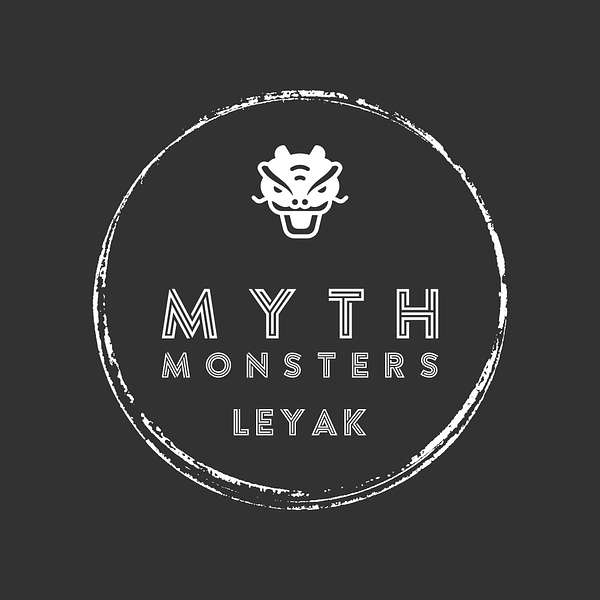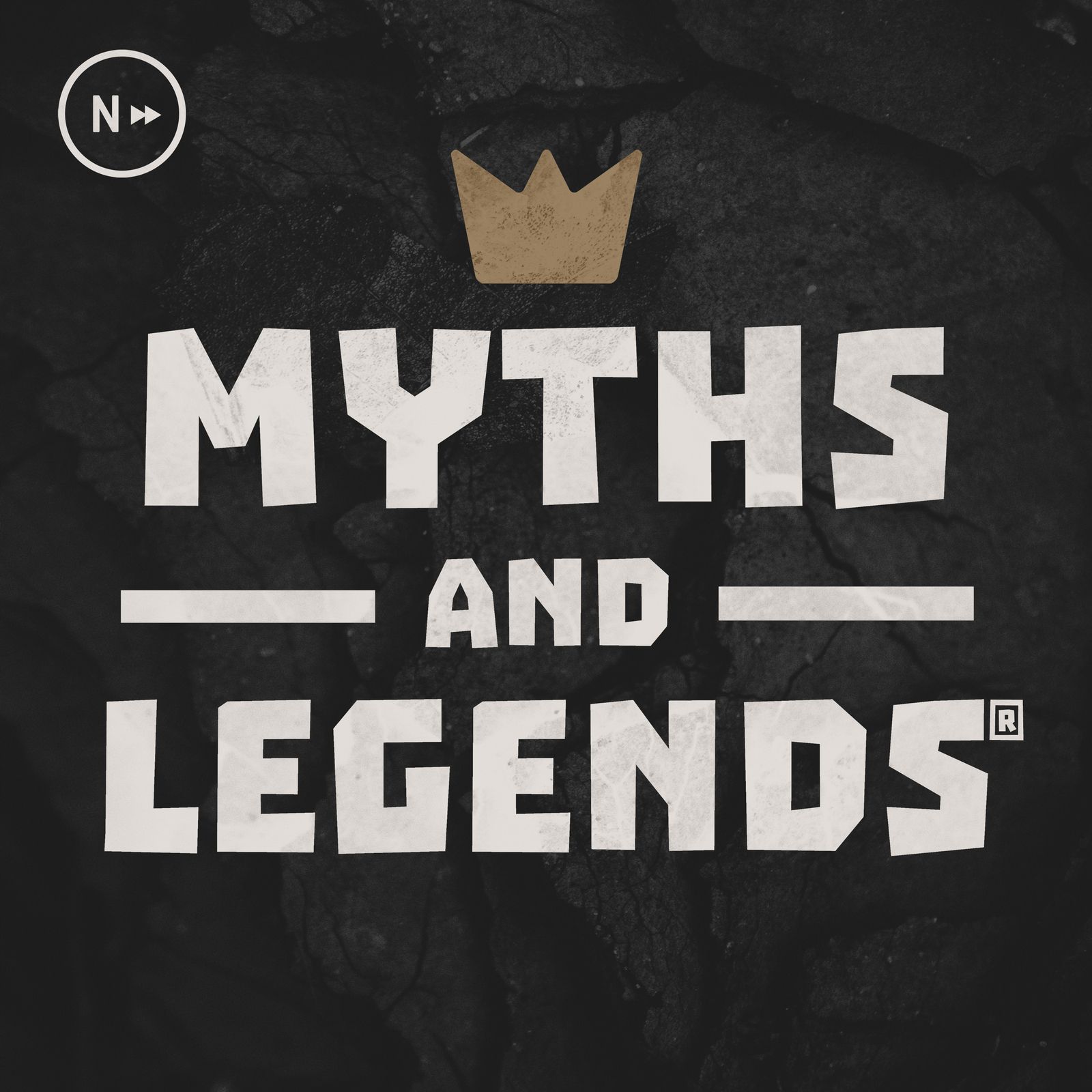
Myth Monsters
A bite sized look into the monsters of global folklore, cryptozoology and mythology with your host, Erin. Jump in and learn about your favourite monsters from Gorgons to Kelpies, to Wendigos to Bigfoot. Stay spooky every Thursday with a new episode with a new monster from another culture. Get in touch on Twitter at @mythmonsterspod
Myth Monsters
Leyak
In this week's episode, we're looking at a spooky child-eating monster from a new mythology, the Leyak from Balinese folklore is our monster of the week! How can you remove one if it became attached to you? How does this monster link to the balance between good and evil? Find out this week!
You can find us on:
Social media:
INTRO:
Hello and welcome to Myth Monsters, my name is Erin and I’ll be your host for these little snack bite size podcasts on folklore and mythical monsters from around the world.
These podcasts focus on the actual cryptids, folklore and mythic monsters from global mythology, rather than focusing on full stories of heroes and their big adventures.
I’ll also be dropping in some references that they have to recent culture and where you can see these represented in modern day content so you can learn more, and get as obsessed as I am about these absolute legends of the mythological world.
We’re back! I hope you had a lovely two weeks off from my vocal tones, but I’m back! I had a nice little break myself, spending much of my time playing video games, but I have also prepared a whole load of episodes for the future, just so that whilst I’m away on holidays this month and the next - you won’t miss me too much.
DESCRIPTION:
But we’re coming back to a really interesting monster - and heading over to a country that we’ve not gone to before, but one you may know from influencer holiday snaps. Yes, we’re going over to the beautiful island of Bali this week and looking at a spooky demon from Balinese folklore, the Leyak.
The Leyak are technically demons and they generally look pretty horrifying, they are described as being floating female humanoid heads with entrails hanging out, including a heart, lungs, liver and intestines. In theory, they are just corrupted women who practise black magic, but we can kind of consider them a demon - and once you hear their MO, maybe you’ll agree with me. They have immensely long tongues and sharp fangs within this form, but this only happens at night - during the day, they retain a normal human shape, but can detach from their body and fly off.
These monsters are regularly found haunting graveyards, where they feed on corpses at night - as they do have a cannibalistic nature to them. However, their prey is not usually the dead, but the newly living. They will hunt for pregnant women around their home graveyard, and if they get the chance, they will suck the blood of the newborn or, if they are not yet born, they will actively try and suck the blood of the unborn foetus by sticking their long proboscis-like tongue into the belly button, mouth, nose or ear of the pregnant woman to feed exclusively from the child. Once the child was three months old, they were protected from the Leyak, so the first few months of the child’s life were the scariest for local women.
In terms of powers, bar the body separation and the long tongues and blood sucking, they can also transform into animals, most commonly a fly or a pig to get around easier without drawing suspicion. Alongside their eating of their prey too, they would also possess the subject - which did make them slightly vulnerable as they were then traceable in terms of their location for hunters of these monsters. If you were targeted by a Leyak though, they could also leave things like nails within your body as well as causing sickness and disease in the family.
If you did notice that you had a Leyak in your family, the only way you could remove this from your home was to take the possessed person away from Bali, as they were unable to leave the island and would evaporate into nothingness - killing it for good. You could also distract them with fresh blood of anything being left outside your house, and this was apparently enough to dispel them. You could also conduct a seance where the victim would identify their attacker, however, revenge was very much dissuaded by the Balian healer.
Now whilst they are considered demons, they were just corrupted souls that were practising black magic in life - and usually died due to poking into magic they shouldn’t have. But there were only three reported Leyaks all together, one of them being male which was very unusual. All Leyaks report into a demon queen, named Rangda - who was a child-eating demon who led an army of witches and demons against the good entity of Balinese folklore, Barong - who we’ll cover in another episode as he is a creature unto himself. But these two depict the eternal struggle between good and evil within this culture.
Rangda is actually portrayed as a nude old woman, who has a long tongue, protruding eyes and long fangs, as well as having really long, unkempt hair and claws. She is very often related to the Hindu goddess of destruction and protection, Kali or even Durga, the Hindu goddess of motherhood, strength and also destruction, and this does make sense as Bali is a Hindi island. She is known as the Leyak queen, whilst having some of their features, and looks over the use of black magic in humans.
Because of this connection to black magic, it is also believed that you could summon Leyaks to set upon business rivals, cheating spouses, neighbours or enemies - where they would wreak havoc on their lives in the ways I described, so pretty rough.
ORIGIN:
In terms of etymology, Leyak means bad witch in Indonesian, however, it comes from two root words, one being Le meaning witch and ak meaning bad. The word is sometimes spelt without the y, but is often used this way in western media to take it away from a leak you’d have in your roof on a wet day. However, what is interesting is that in Sri Lanka, they have monsters called Yakshas, which live all over Asia and their name comes from the Sinhala language, where Le means blood, and Yak means demon - I thought this was cool at least.
For their history, this is where it gets interesting and where my job starts to get really difficult. Unfortunately, there is no clear history with them, there’s no definitive date or even century that the sightings or reports of these started. However, what we do know is that Bali is an old country and they have a large native population, meaning that a lot of the time, you would find these kinds of myths started in tribes or villages, and would spread through word of mouth - meaning we can never really put a date on them anyway.
However, what we do have is Rangda’s history and story, which does give some idea as to how far they go back, as she is considered their queen. This goes back to at least the 10th century or 900 AD, during this time in ancient Java, there was an infamous witch named Calon Arang who practised black magic and made all of the local farmers' crops die and spread disease through her local community. She had a daughter Ratna, but due to her mother’s nature, she could not find a husband - and in revenge Calon kidnapped a local girl and sacrificed her to Durga, the goddess of death, and a great flood swept across the village, killing all the local boys. King Airlangga heard of this and sent his advisor to deal with the issue, and he decided instead of doing that - he’d send his disciple Empu Bahula to marry Ratna. They had a huge wedding over seven days and nights, and during this, her new son-in-law found Calon’s book of black magic and handed this over to the King. Empu Bahula and his leader fought her, and without Durga’s help, Calon was defeated, and the village was saved. It is believed that Calon in death, became what we know as Rangda now, leading a legion of child-murdering Leyaks who spread disease and chaos in her goddesses name.
There is another interpretation of this story, and that is Rangda was originally the mother of King Airlangga and was condemned for her use of black magic and exiled from the island. She sought revenge on her ex-husband and summoned all the evil spirits in the jungle, including Leyaks and demons and they caused a huge plague. She killed half of the kingdom before she was killed by a holy man, then reincarnated as Rangda, demon queen.
Leyaks themselves have no discernable history, however, based on these stories, we do have to imagine that they were around before the 900’s to have a queen. Leyaks represent disease and illness within Balinese culture and each village will have a mask of Rangda or a Leyak in their local death temple, as they were known to ward off any influence of Rangda’s demonic hordes.
For real life comparison, they are often linked to the Sun Bear - which are the sweetest looking bears. They’re smaller than most and have black fur, with a sunflower looking patch on their chests, hence the name. They have immensely long tongues, and generally stand at about 6ft, making them slightly more human sized. It was believed that these were the hidden forms of Leyak during the day, but they are just trying to eat some honey ya know.
For mythical comparisons, you may have been thinking this WHOLE TIME that this sounds like another monster we have covered in the past, with the floating head and organs, long tongue and habit for eating babies. And you’d be right, they’re even from Asia, much like the others. The ones you’re probably thinking of are the Penanggalan or the Mananaggal - which we’ve covered in the past.
The Penanggalan is a Malay monster who does exactly the same thing - separating head from body with floating organs and feasting on women either menstruating or pregnant. There is another that we’ve not covered yet, which is the Krasue, which again is the same kind of monster but from Thailand, Laos, Singapore, Vietnam and India, but this one is more of an umbrella monster for all of Southeast Asia, so whilst they are different monsters - they are regional variants, which usually I cover all in one episode, but the Penanggalan, Krasue and Leyak are all different enough to have their own episodes - which is why you might be thinking I’m slightly repeating content, I promise I’m not (at least I try not to).
The Manananggal is a slightly different variant within Filipino folklore, as they are more considered vampires and only separate their upper and lower halves and have wings. Whilst they do still have the tongue and craving for pregnant women, they are again, slightly different - but you can definitely see a theme across Asia for these monsters, and one that preys on the innocence of newborns and the vulnerability of pregnant women, which in itself is an interesting cultural focal point for a monster. It certainly implies that these people should be protected from forces like this, and gives a good excuse to stay safe during pregnancy and with newborns - which is fair.
CULTURAL SIGNIFICANCE:
Now onto modern media, I’ve merged all of those monsters that I spoke about earlier into a super modern media special as there isn’t much for Leyaks specifically.
For art, have a look at classic costumes and statues of Rangda and the Leyaks from around Bali, you can just pop Leyak into Google images to see some really beautiful masks and costumes from plays around the demon queen. Otherwise, stick to independent this week, which is where my advertising image came from too!
In movies, we have; Lipad, Darna, Pagsapit ng Dilim, Shake, Rattle and Roll, Impaktita, Manananggal in Manila, Scary Mother, Ang Manananggal sa Unit 23B, Mystics in Bali, Fei Tou Mo Nu, Demonic Beauty, Penanggalan, The Aswang Phenomenon, Creepshow, Manananggal and The Boxer’s Omen.
For TV, we have; Marvel Anime: Blade, InCryptid, Elemento, Supernatural & Grimm.
In video games, we have ones such as; Manang Game, Nightfall: Escape, Dungeons and Dragons, Pathfinder, Indivisible, Dark Conspiracy, Malifaux & Final Fantasy.
My book recommendation this week is to have a look at Indonesian Folktales by Murti Bananta and Margaret Read McDonald for a great insight into the islands of Indonesia, such as Bali and their folklore - as it’s definitely one that I’ve missed out on before! Or for something a little easier, have a look at Indonesian Children's Favourite Stories: Fables, Myths and Fairy Tales by Joan Suyenaga and Salim Martowiredjo for some kid friendly stories too!
DO I THINK THEY EXISTED?
Now it’s time for, do I think they existed?
I’m not too sure about this one, just like I was in my previous Asian-baby-eating-innards monsters, because it seems that belief in them is so widely spread and they are so feared that it gives me a slight case of the willies. Whilst I’ve never been pregnant, the idea of something sucking the life out of the child I’ve not even met yet is pretty scary, I would definitely take much more caution, but I guess that you do that anyway as a pregnant person.
I do love that this myth is intrinsically linked to the Balinese and Hindu religion and this idea of a Leyak queen is not something we’ve really seen before with demons and hierarchy, so it’s really interesting to me at least. I also love that Rangda has firmly made an impact as a demon queen within this culture and represents the evil that is constantly battling with good, with her horde of monsters like the Leyak on her side. I’m even more excited to cover Barong now to bring you the other side of this - you can’t say that I only talk about evil monsters on this show.
But I love going over to this part of the world, and I am biased as I have covered a few of these types of monsters already, but these are definitely my favourite as they are more malevolent and just really evil to pick on newborn babies and very vulnerable people - which doesn’t sound great from my side I guess, but I do like covering the evil ones, it’s so much more fun.
But what do you think? Did the Leyak roam the graveyards of Bali? Let me know on Twitter!
OUTRO:
A great and different monster to come back to, and I am so happy to be back. This one was super different and as you know, I love covering something new, as well as named monsters which I do find so fascinating.
Next week, we’re heading over to Scotland for a wonderful Gaelic folklore monster for the spooky omen spirit of death, the Bean Nighe. If you catch a washer-woman in the night by a river, maybe you should avoid her next Thursday!
For now, thank you so much for listening, it’s been an absolute pleasure. If you enjoyed this podcast, please give it a rating on the service you’re listening on - I’ve got the twitter for any questions, or suggestions on what monsters to cover next and I’d love to hear from you. The social media handles for Tiktok, Youtube and Instagram are mythmonsterspodcast, and twitter is mythmonsterspod. But all of our content can be found at mythmonsters.co.uk - you can also find us on Goodpods, Buymeacoffee and Patreon if you want to help me fund the podcast too.
Come join the fun though and share this with your pals, they might love me as much as you do.
But for now, stay spooky and I’ll see you later babes.
Podcasts we love
Check out these other fine podcasts recommended by us, not an algorithm.

FolkLands
Tim Downie, Justin Chubb
Chatsunami
Satsunami
The Howdy Beans Podcast!
Luke The Elder Bean!
My Brother, My Brother And Me
The McElroys
Myths and Legends
Jason Weiser, Carissa Weiser, Nextpod
Lore
Aaron Mahnke
Exploration: Dreamland
Exploration: Dreamland
The Neatcast
Jeremy, Zack, Mike
Effin' Cultured
Bobby, Griff, and The Rik
